The quality of the work of a technical writer depends on the satisfaction of their audience.
That’s why technical writers need a steady stream of clear consumer feedback to really gauge how their documentation is serving its users.
The good news is that there is more than one way to gather clear, actionable, and relevant feedback, each with its own advantages and special uses.
So go ahead, have a look at our list of top six methods for collecting documentation feedback that will tell you exactly which documents need more attention and which are exceeding user expectations.
The first method on our list is something every internet user is very familiar with.
Enabling Discussions in the Comments Section
Feedback works best when it’s an honest discussion. Of course, having a real conversation within a technical document is easier said than done.
Thankfully, there is a solution that will allow you to actually talk to your document users, right then and there, on the document page.
That solution is the simple yet effective comment section.
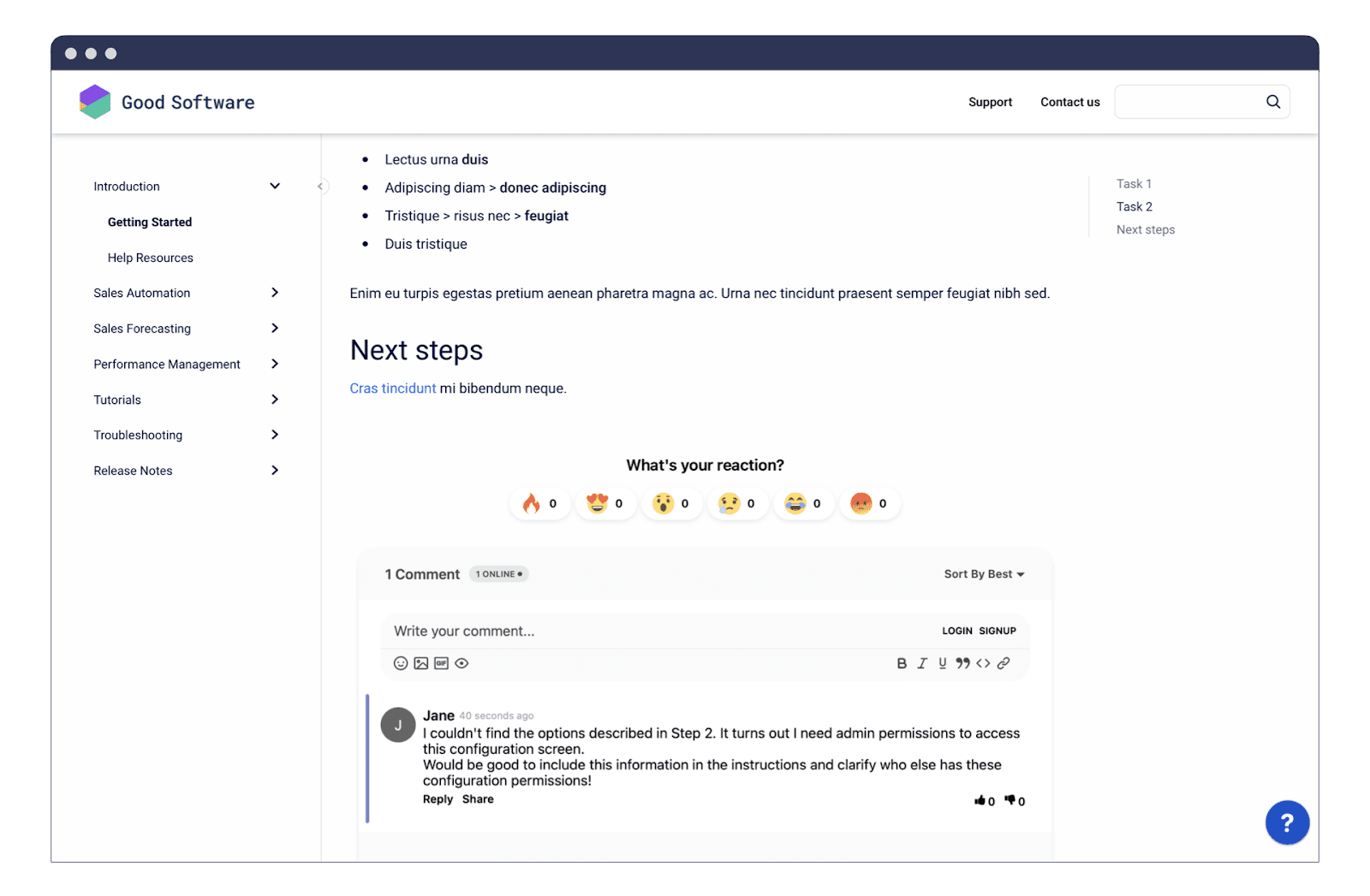
Source: k15t
When users are allowed to comment on your documents, they’re able to provide you with feedback while their experience with your documentation is still fresh in their minds.
This can result in very specific pointers about what your documentation is missing, which parts of it are unclear, and even suggestions on how to improve it.
And that’s not all.
A comment section can also be an element of community in your documentation.
An opportunity for you to signal to your users that you welcome discussion, and a place where users can share their experiences with your documentation and suggest changes.
Sean Martin, a marketer at the KlientBoost agency, sums it up well:
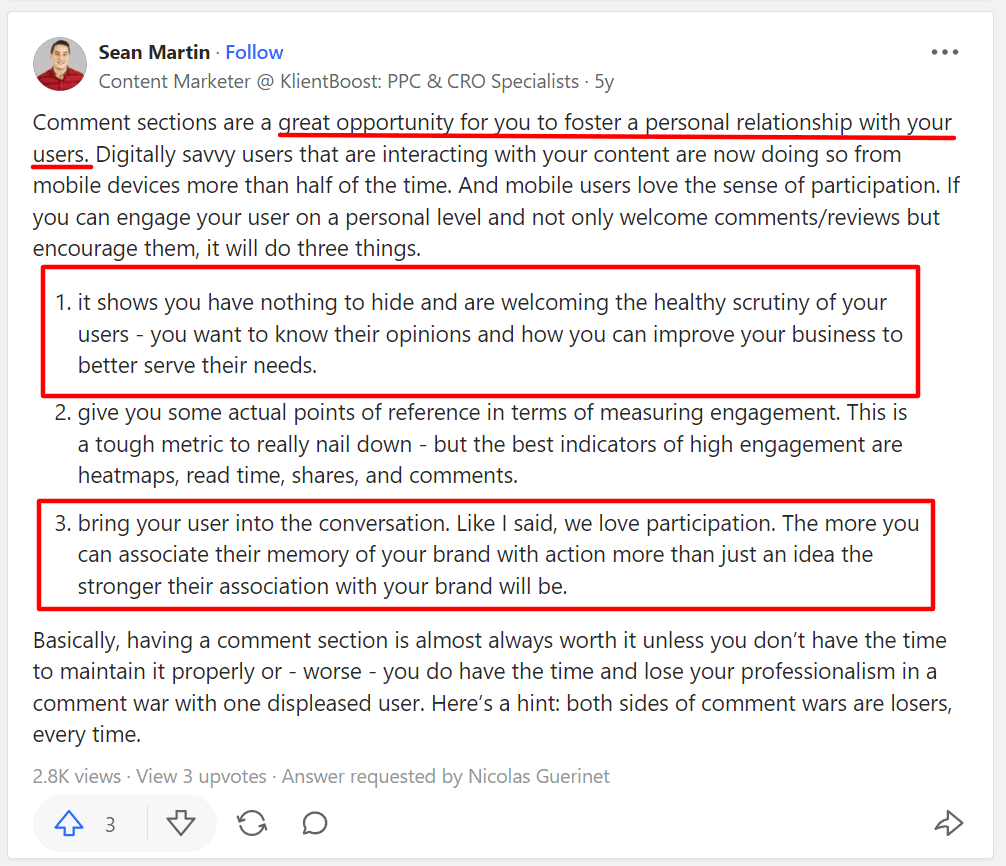
Source: Quora
His last point is particularly important. If your users are discussing your documentation in the comments section, that means they’re, in a sense, participating in creating it.
This involvement is a powerful thing because it makes users feel engaged and more connected with your documentation and, by extension, with your product as well.
In summation, providing a comment section is an excellent way to get very relevant and specific feedback.
An added benefit is the sense of community that might result from users having a space to voice their opinions and discuss the documentation.
Introducing User Ratings
Comment sections can indeed work wonders for your documentation site, but a major drawback is that leaving a coherent, detailed-enough comment takes a bit of time and effort.
So, can you be sure that a user that has a formed opinion will actually leave their feedback and not skip it because it feels like too much work?
In short, you really can’t.
The fact of the matter is that modern, internet-dwelling humans have a very short attention span, and you simply can’t count on them to go into detail about how your documentation served them.

Source: Archbee
Therefore, if the fact that users are not leaving feedback because it takes too much effort is a concern, other methods need to be explored.
A good one is implementing a rating system.
This allows you to collect feedback from users that has some level of detail (i.e., the feedback is on a scale) yet takes just a second of the user’s time and almost no effort.
Now, rating systems can be more or less complex, but they all work the same way.
Here’s an example:
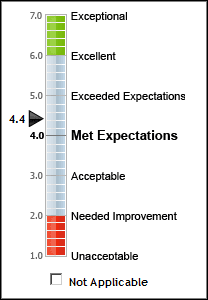
Source: Quora
As you can see from the scale above, the user can express how they feel about something, and their choices can range from unacceptable to exceptional, with a couple of milder sentiments in between and a neutral position in the middle.
With such a system in place and enough data, the technical writer can discern if they are meeting (or exceeding) user expectations, or if they need to make some changes in the approach they take for documentation.
Of course, today’s content rating systems usually aren’t this complex. To make leaving feedback as effortless as possible, knowledge managers usually opt for something simpler.
Such as the popular five-star rating system:

Source: unstats
Or the more contemporary emoji scale rating system:

Source: Dyna Themes
As we are often faced with such rating systems online, users have no problem understanding what you want from them.
They’ll leave feedback from which you will be able to conclude if you’re on the right track with your documentation, or if you need to make some substantial changes.
Sending Out Email Surveys
Email surveys are your best bet for getting very detailed feedback from your documentation users.
They may lack the immediacy of comment sections, but they more than make up for it in the amount of detail and different angles from which they approach the subject.
However, you should beware that your documentation users won’t be thrilled with having to fill out very long surveys that get sent to them too often.
Therefore, if you want to increase the chances of your survey being returned to you, make sure you keep them short and allow enough time to pass between surveys.
Why is conciseness so important?
Well, research shows that the more questions your survey has, the higher the chances your respondents will simply drop off in the middle of it and decline to finish it.
You can see how the number of questions correlates to the dropoff rate in the table below.
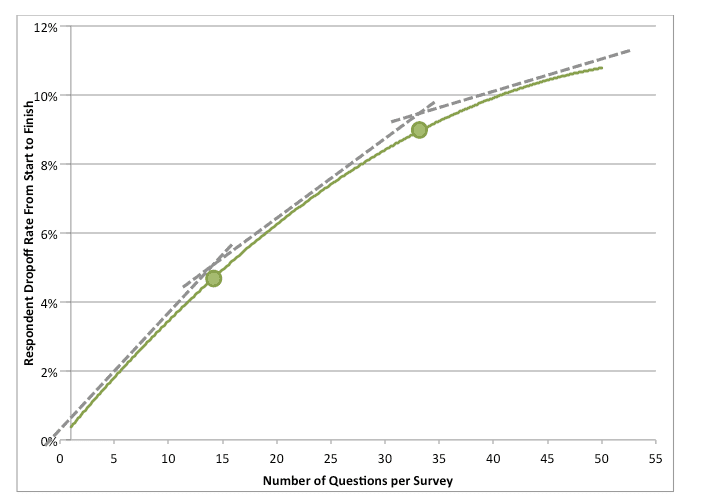
Source: Survey Monkey
The optimal survey that gathers enough data, but doesn’t exhaust the respondent will simply ask the user whether or not they are using the documentation in their work, if they are finding the information they were looking for, and whether that information contributes to a positive user experience.
Survey Monkey has an excellent, concise, and impactful template you can use to model your own email survey. You can find it on the link below:
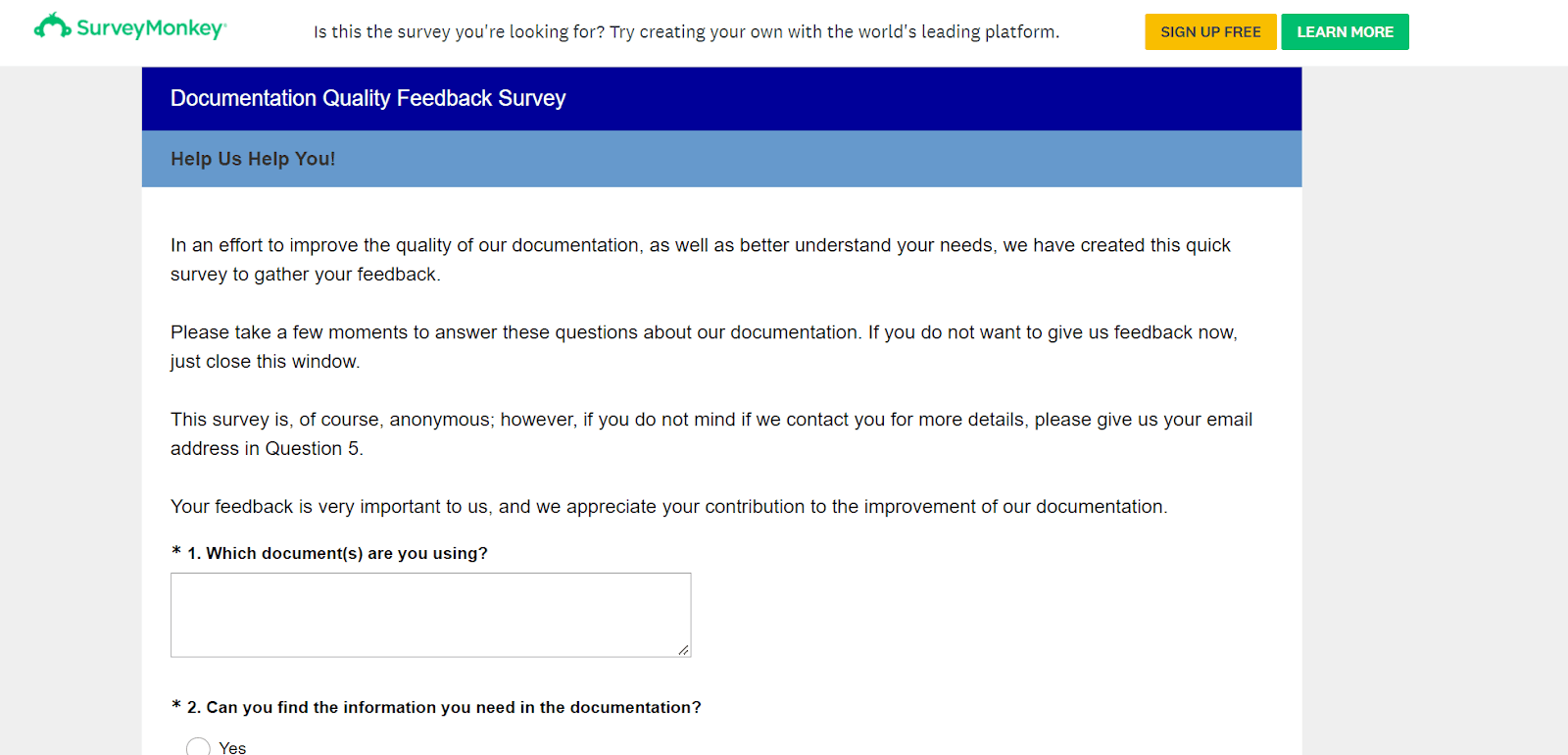
Source: Survey Monkey
As for the frequency of sending your email survey, it will depend on the type of software you offer and the kind of clientele you serve.
For B2B software products, Jack Davies, content team lead at Qualtrics, recommends sending your survey only a few times a year:
“In B2B, the best practice is to send your customer surveys quarterly. A B2B audience typically interacts with a company much less frequently than a B2C audience, so it makes sense that you should reach back out to them much less frequently.”
Email surveys can be a treasure trove of valuable feedback because they collect more information than any other method.
However, don’t get greedy and demand too much feedback from your customers because that approach will have an effect opposite to the one intended.
Offering Live Chat Support
Live chat is a quick and direct way for users to point out problems in your documentation and ask for support when completing a task.
This high level of engagement makes for a very efficient problem-solving process and provides a great customer experience for the user.
It’s, therefore, no surprise that customers report high levels of satisfaction when they have access to live chat support.
At least, that’s what a Zendesk survey found:
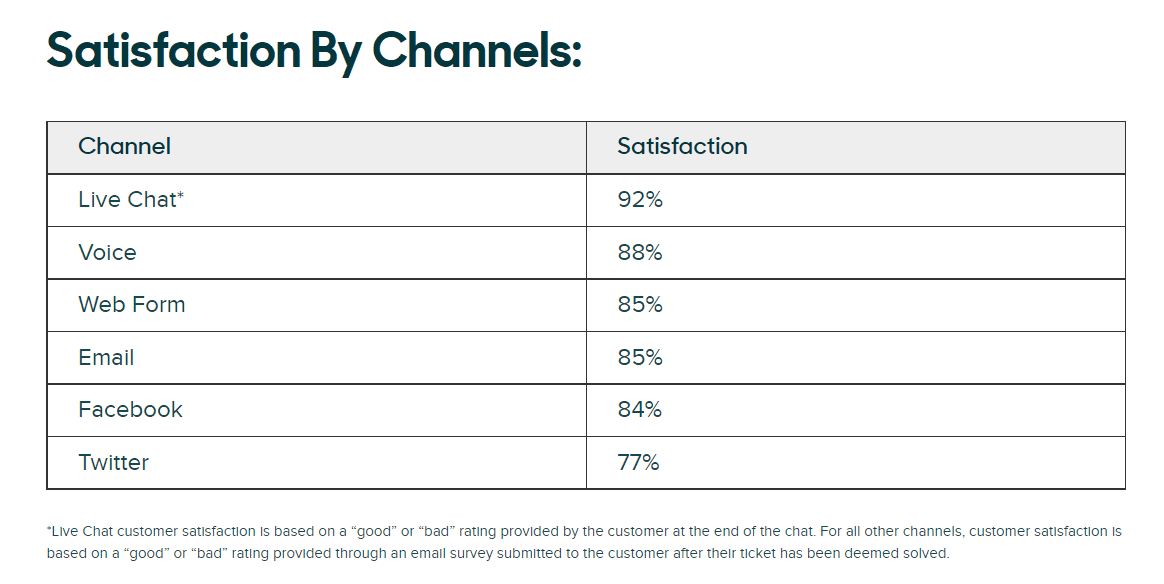
Source: Zendesk
Beyond being the customers’ favorite method of support, live chat can also be a powerful tool for collecting relevant, actionable feedback for your documentation.
Think about it. If a user encounters any kind of problem with your documentation, they could instantly contact you and ask for assistance.
For example, if they are having trouble understanding the instructions in a document, they could contact support and ask for clarification.
This would give you the opportunity to carry the user over the obstacle before they get frustrated, as well as provide you with a clear indication that a document needs to be improved because users are having trouble with it.
However, this method of collecting feedback is a little more indirect.
The users of your documentation would probably need to chat with a customer support agent, and not the technical writer directly.
The customer support team could then compile reports on the problems users are facing when exploring the documentation and forward them to the documentation team, who would make the necessary changes.
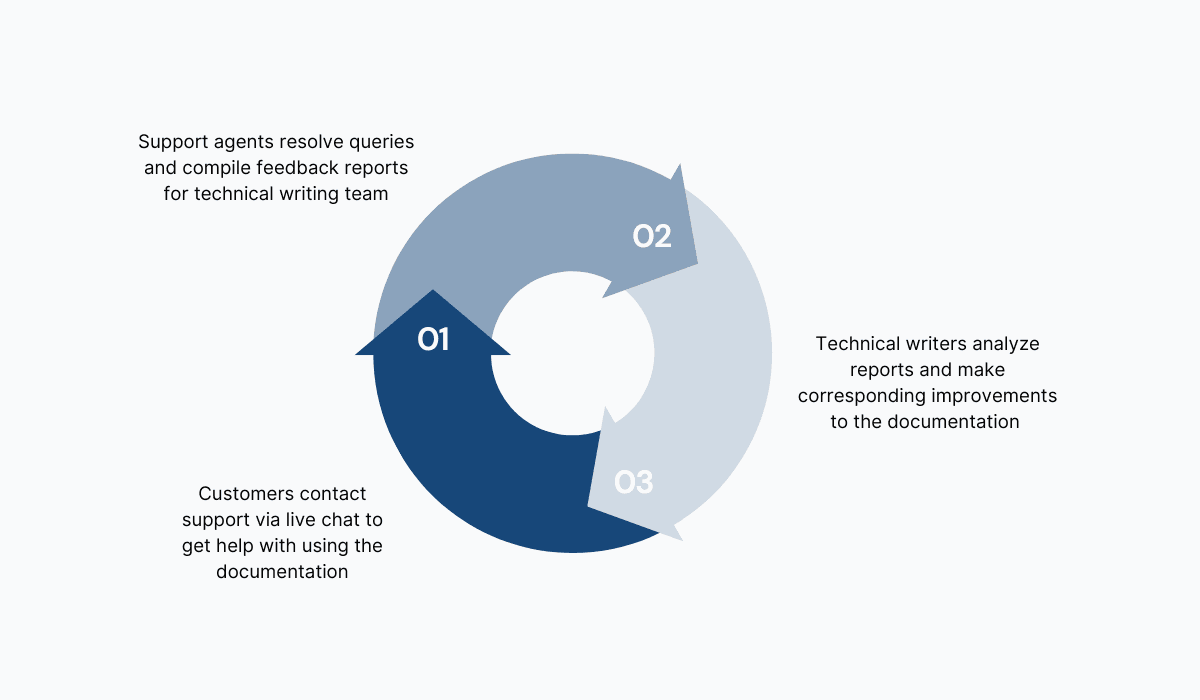
Source: Archbee
Also, as you can probably imagine, this would be one of the more expensive methods of collecting feedback, just because there are so many additional steps to the process.
Besides, support teams are usually very busy working with customers, so consider their workload before you add the task of collecting feedback for technical writers to it.
To sum up, adding a live chat option to your documentation is one of the best ways to ensure a positive experience for users while collecting clear and relevant feedback.
However, this method doesn’t come cheap, so be sure you can afford it.
Creating a “Send Feedback” Button
In a previous section, we talked about rating systems and their no-fuss approach to leaving nuanced feedback.
One of the problems with that method is that it has a bit of a “positivity problem” because most users leave a high rating or no rating at all.
For example, more than half of the ratings left on sites like Amazon and Yelp are five stars, and the average rating of products on Amazon is 4.2.
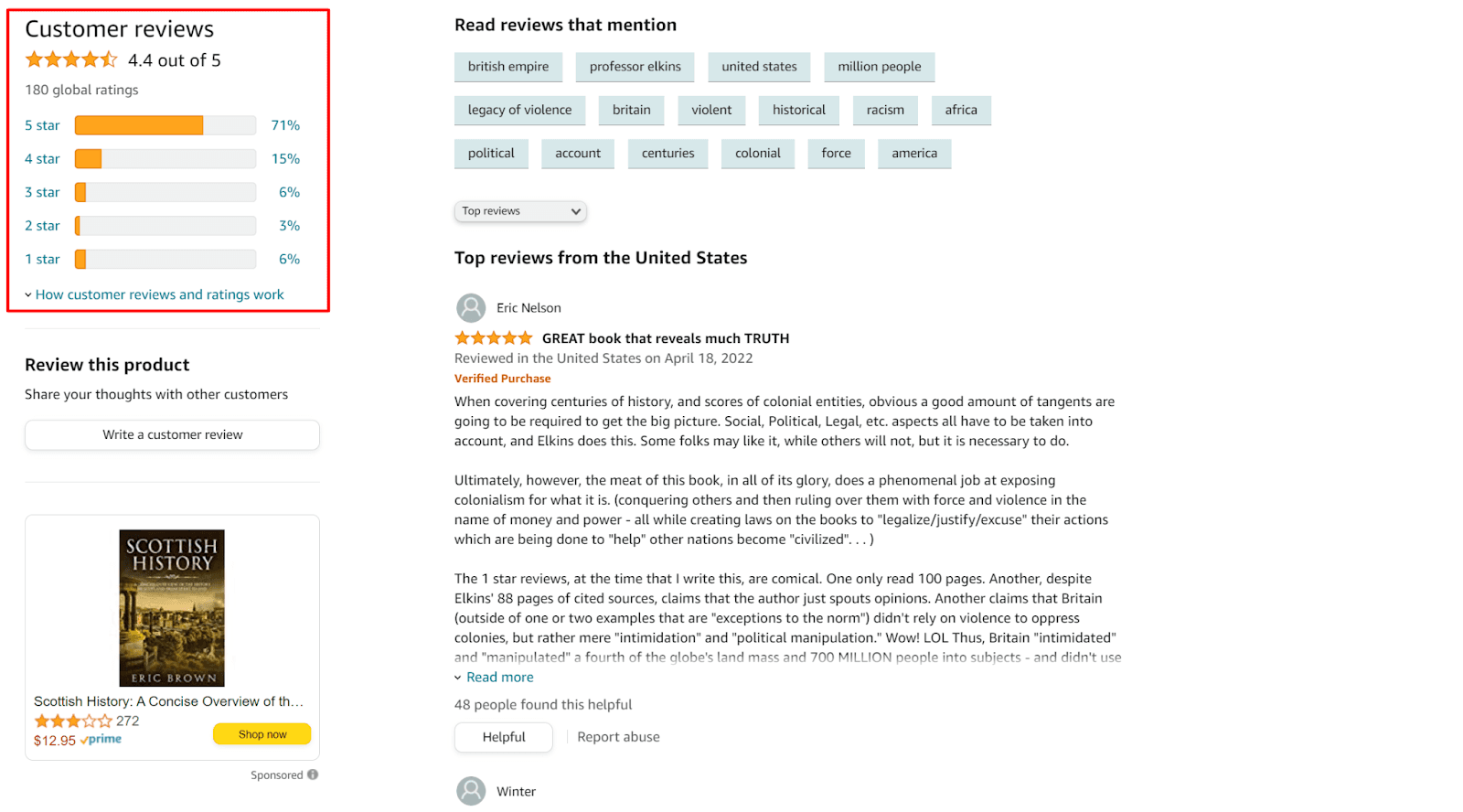
Source: Amazon
All this positivity could obscure some severe problems with your documentation because the positive reviews could convince you that nothing needs to be improved.
The problem could stem from the fact that ratings are so easy to leave and online resources solicit them in a very direct way.
Therefore, if you want to get more realistic, objective feedback, it might be a good idea to try a more subtle method that doesn’t solicit feedback so openly.
One such method is the “Send feedback” button.
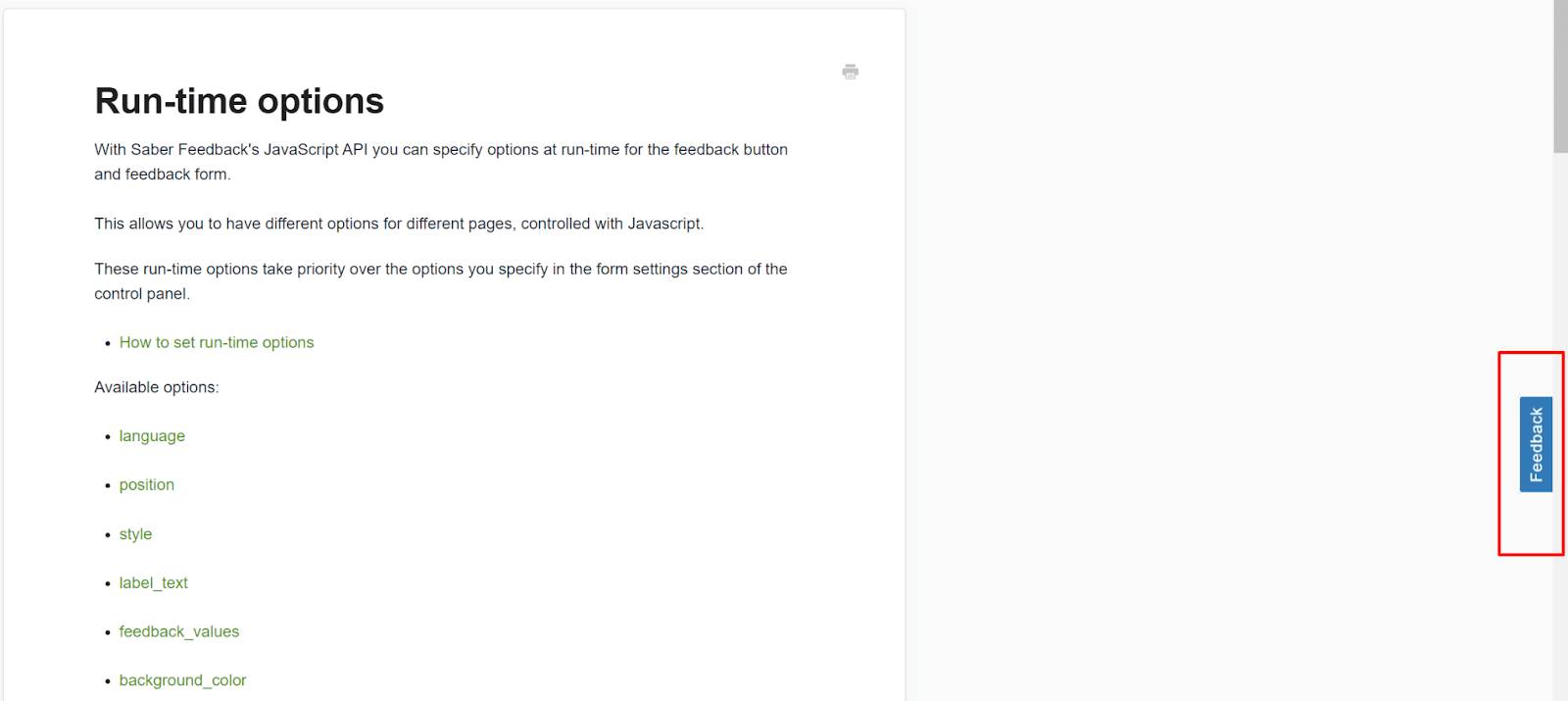
Source: Saber Feedback
This button practically ensures that the majority of feedback you’ll be receiving is from users who have strong opinions about your documentation precisely because the user isn’t prompted to leave feedback but simply given a subtle option to do so.
This method also enables users to give you very detailed feedback (much like email surveys) that’s immediate and fresh because it’s sent from the documentation page (much like the comment section).
Depending on which software you use, there are some other handy benefits as well.
For example, Saber Feedback allows users to attach a screenshot of the page to better explain the subject of their feedback.
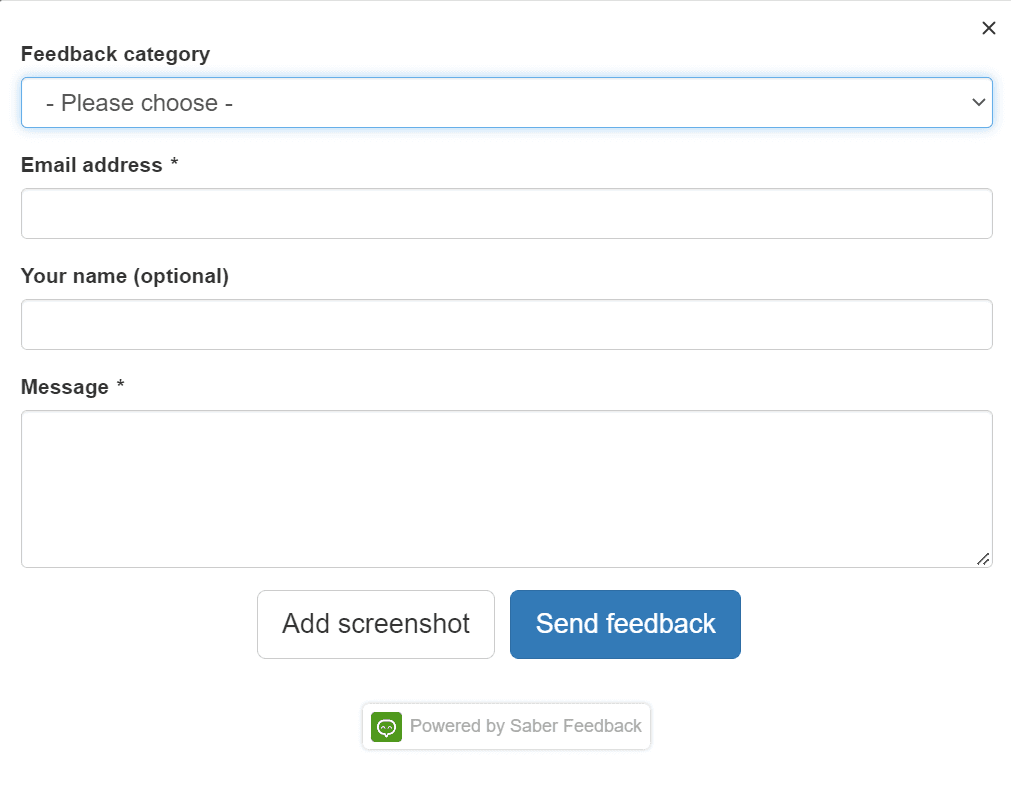
Source: Saber Feedback
However, since this method is so subtle, you can probably expect a smaller volume of feedback coming your way compared to the easier and more direct feedback options we described earlier.
Long story short, not asking for feedback directly but providing an option for users to leave it is a great way to get a realistic overview of how your documentation is serving users.
A great way to be subtle about feedback is by placing a button somewhere on the page for users who want to use it.
Checking the Documentation Analytics
The best approach to gathering feedback on your documentation might not involve people at all.
Instead, you could rely on objective data collected from your knowledge base that tells you how people use your documentation and how they behave onsite.
To do that, you would need the help of analytics software that records everything that happens on the document page.
This software includes tools such as Google Analytics and Adobe SiteCatalyst.
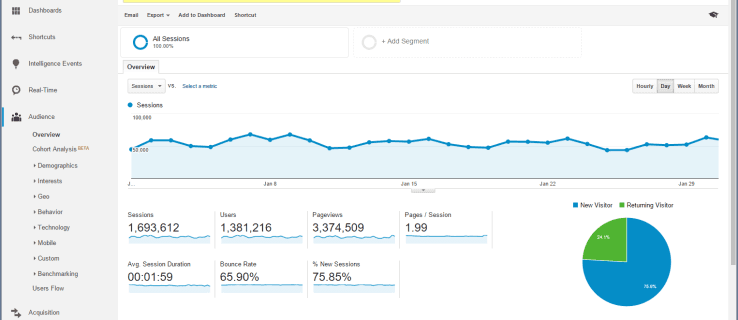
Source: Alphr
Checking your documentation analytics can give you a clear indication of what changes you need to make to every document and how your overall documentation can be improved.
Here are a couple of examples of how analytics can be used to generate feedback:
- High-traffic pages: the documents that get the highest volume of visitors indicate that these are the aspects of your product that people are interested in the most, therefore giving you an idea of where your efforts as a technical writer should be.
- Bounce rates: if visitors are leaving a document after a short time, that may point to the conclusion that visitors aren’t finding the information they were looking for—those pages might be in need of improvement.
- Keyword analysis: keeping track of what your users are searching for could be a good way to generate ideas for new articles in your documentation that will provide exactly what users need.
As we said, there are analytics tools that can help you keep track of your documentation.
However, many quality documentation software products offer powerful integrated tools for the same purpose.
For example, our own documentation software, Archbee, allows document owners to track how helpful the documentation is to users.
Archbee’s default feedback method is the simple upvote and downvote button, which tells documentation providers if people are finding the document useful.

Source: Archbee
This feature collects data that admins can then access and quickly find out how users feel about every individual document.
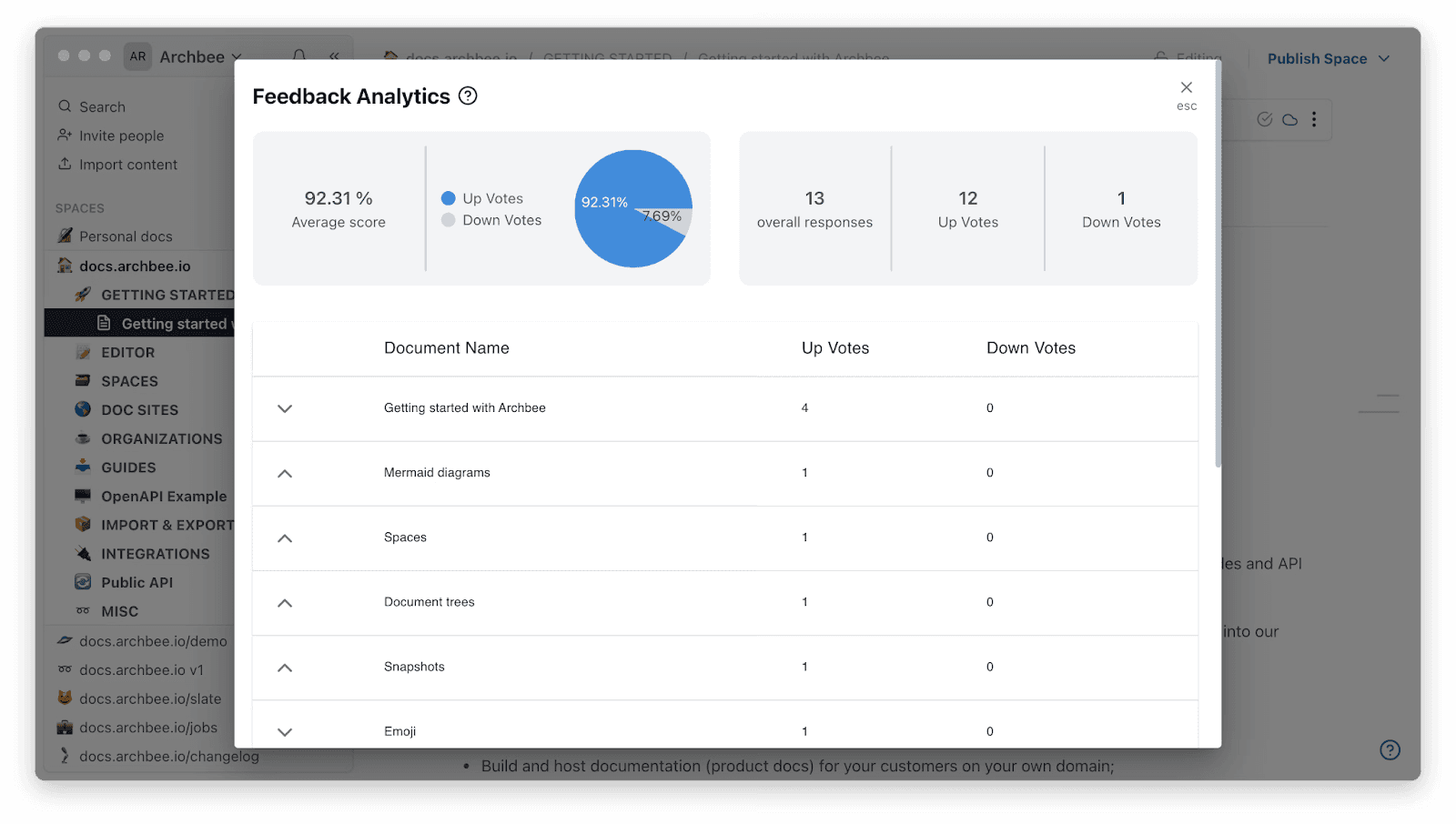
Source: Archbee
If a document is overwhelmingly downvoted, that’s a clear indication that users aren’t finding it helpful.
Technical writers then know exactly which documents to focus on when they’re maintaining the knowledge base.
And if that’s not enough data for you, Archbee also has a Google Analytics integration that will allow you to take a deeper dive into the performance of your documentation.
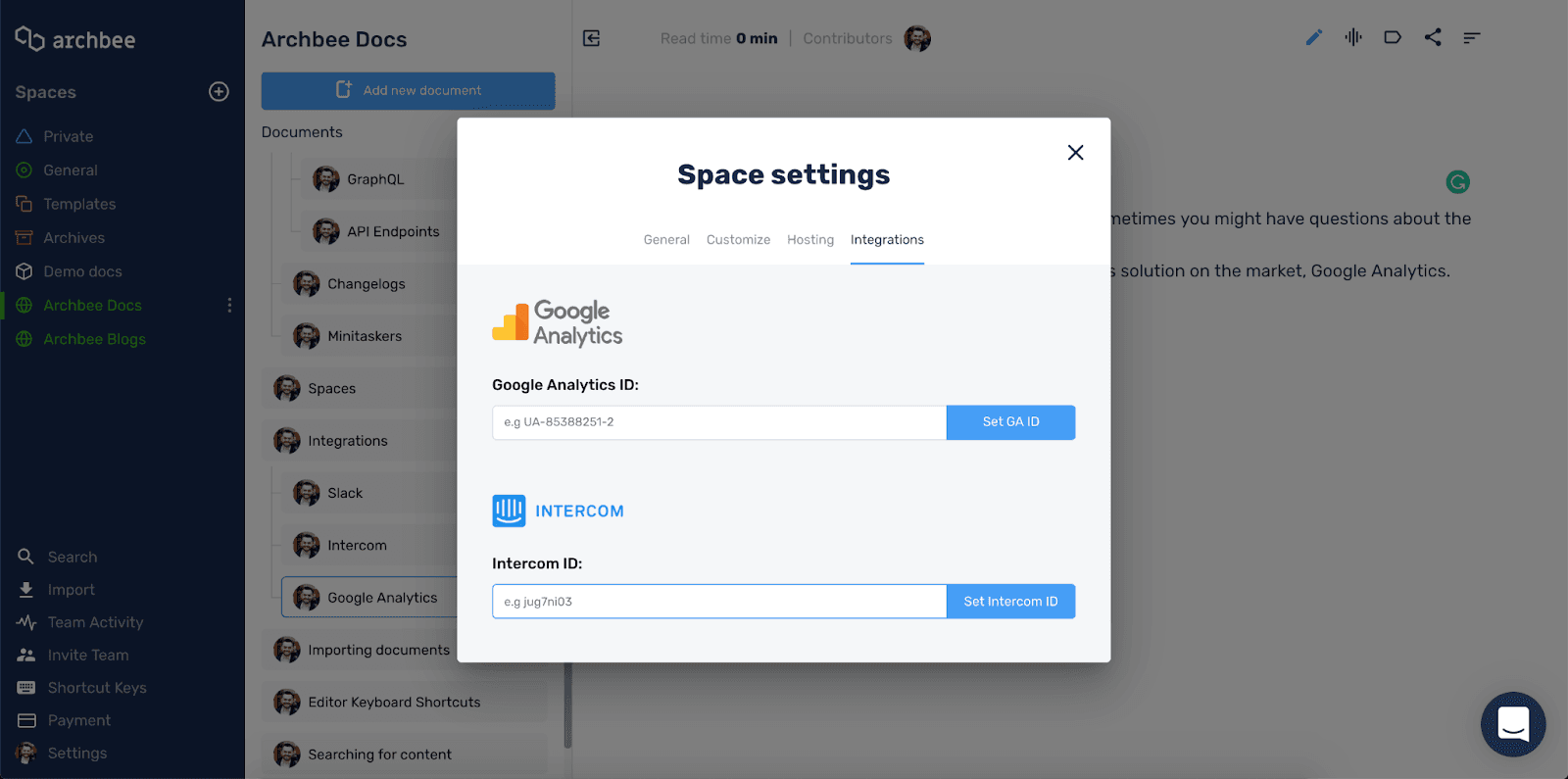
Source: Archbee
Remember, documentation users can be very subjective with their feedback. Cold, hard data, on the other hand, never lies.
That’s why it’s definitely a good idea to track your documentation with analytics tools and use the data to make objective improvements that will benefit everyone who accesses your knowledge base.
Conclusion
Regularly collected, clear feedback is a way for a technical writer to improve their skills and it’s how a company improves its documentation to better suit their users’ needs.
There is more than one way to collect feedback and each method has its advantages and drawbacks.
Now it’s up to you to weigh the pros and cons and select the method of gathering feedback that’s the most useful for you and your company.
Try Archbee's full range of features with our free 14-day trial.
Frequently Asked Questions
User feedback is the fastest way for technical writers to learn whether their docs actually help people get work done. It: - Reveals what's missing, unclear, or out of date - Shows which pages delight users and which need rework - Helps prioritize fixes by impact, not guesswork - Reduces support tickets and frustration by closing gaps - Builds a sense of community and trust by inviting dialogue Bottom line: steady, clear feedback turns documentation into a living resource that keeps pace with user needs and product changes.



